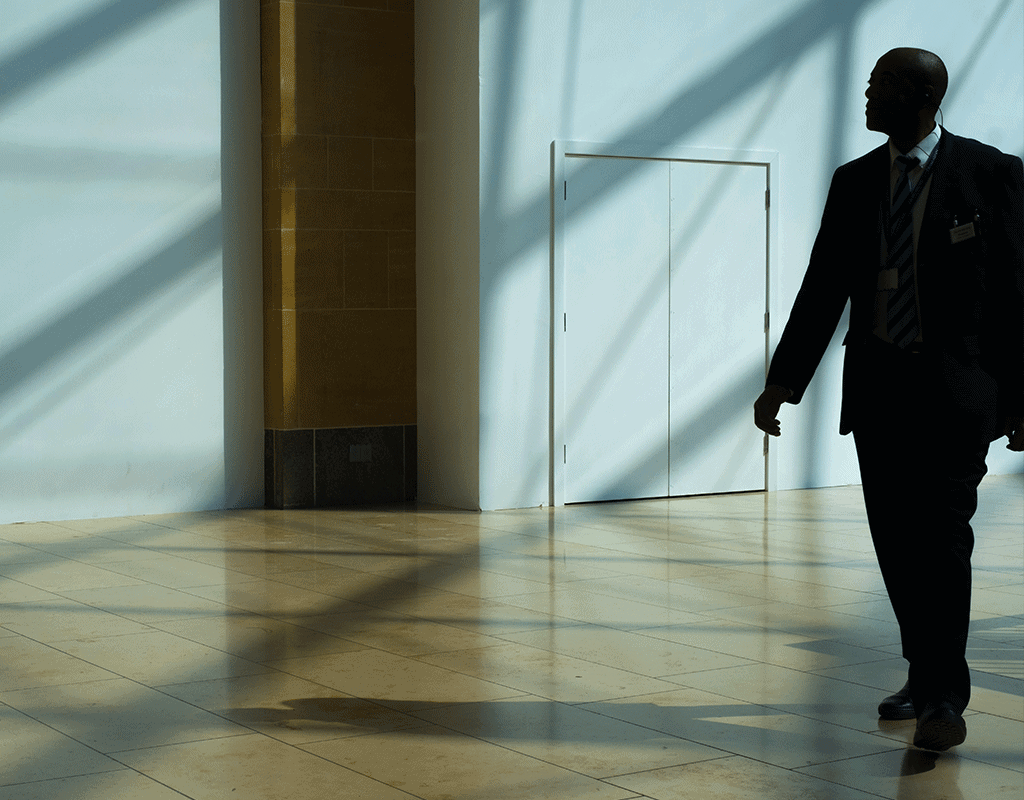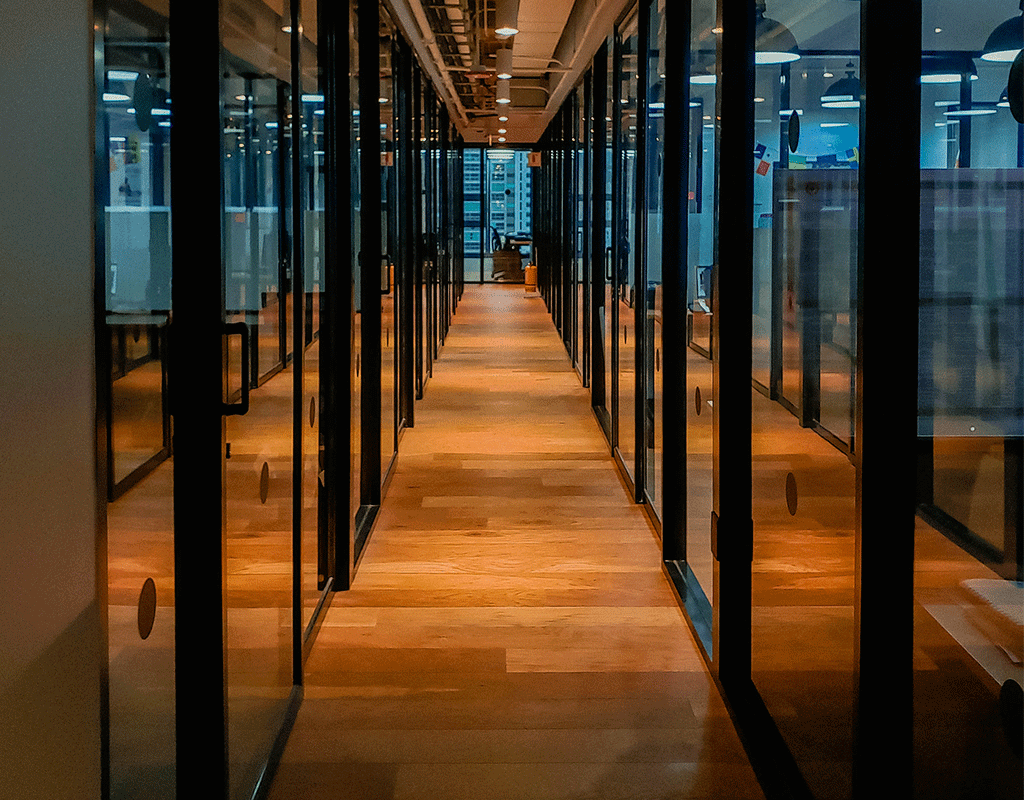How an innovative commercial security system improves safety & protection
In today’s UK workforce, it’s estimated that around six million people work alone. Lone workers are employees who perform an activity, task or job in isolation from other staff and without direct supervision.
Examples of people who work alone include traders, suppliers, receptionists, service desk operatives, and any employee who typically works outside normal hours, such as cleaners.
For this reason, it’s important that the individuals and decision-makers responsible for commercial security systems conduct a lone working risk assessment as a review of their security measures to protect their staff and build a secure work environment. UK employers should be aware of the legal obligation to carefully consider the health and safety risks of lone workers.
While it’s often completely safe for employees to work alone, the Health and Safety at Work Act and the Management of Health and Safety at Work Regulations iron out any health and safety risks before people are allowed to work alone. This guide provides straightforward advice for organisations and commercial spaces that rely on lone workers.
Continue reading to learn about the legal code of practice relating to the ‘Provision of Lone Worker Services‘ and discover how a modern commercial security system can improve safety and protection.
In today’s UK workforce, it’s estimated that around six million people work alone. Lone workers are employees who perform an activity, task or job in isolation from other staff and without direct supervision.
Examples of people who work alone include traders, suppliers, receptionists, service desk operatives, and any employee who typically works outside normal hours, such as cleaners.
For this reason, it’s important that the individuals and decision-makers responsible for commercial security systems conduct a lone working risk assessment as a review of their security measures to protect their staff and build a secure work environment. UK employers should be aware of the legal obligation to carefully consider the health and safety risks of lone workers.
While it’s often completely safe for employees to work alone, the Health and Safety at Work Act and the Management of Health and Safety at Work Regulations iron out any health and safety risks before people are allowed to work alone. This guide provides straightforward advice for organisations and commercial spaces that rely on lone workers.
Continue reading to learn about the legal code of practice relating to the ‘Provision of Lone Worker Services‘ and discover how a modern commercial security system can improve safety and protection.
Add Your Heading Text Here
Lorem ipsum dolor sit amet, consectetur adipiscing elit. Ut elit tellus, luctus nec ullamcorper mattis, pulvinar dapibus leo.

Common challenges and risks for lone workers
Employees who work alone in their day-to-day roles may be exposed to unique risks without support from coworkers or supervisors. In fact, one shocking statistic claims that 150 lone workers are attacked (both physically and verbally) every day in the UK.
As well as persistent threats of violence or abuse, lone workers are also at risk of sudden and unexpected accidents, injuries or illnesses while working on the job. The challenge of the role may leave employees feeling anxious about working in vacant offices or late at night from a significant distance from other people.
For the likes of security guards, night-cleaners and front desk assistants, it can be challenging to differentiate between a legitimate client or an unauthorised intruder at any time of the day. Not only can this put the individual worker at risk, but it also places the commercial space in danger of break-ins or theft from intruders.
How can your company protect lone workers?
The simplest place to start is to pinpoint exactly what types of lone workers you have. Typically, lone workers fit into one of three categories:
Public-facing
Mobile
Fixed-site
Once you identify the types of lone workers, it’s important to create a clear and strategic lone working risk assessment.

Prepare an effective lone working risk assessment
Despite the occupational hazards associated with unsupervised work, the Health and Safety Executive (HSE) doesn’t provide detailed examples of what issues a lone worker may face and how these could impact employee wellbeing. As a result, individuals responsible for operating a commercial space must take the initiative to create their own Lone Working Risk Assessment.
Creating an actionable plan, providing relevant training, and delivering sufficient communications to keep employees in the loop is critical to protect lone workers and foster a secure work environment.
The lone working risk assessment is also a great opportunity to evaluate existing security measures that are currently in place, as well as determine when the last time the CCTV or access control readers were last updated or maintained.
To get an accurate picture of your site security, the team of specialists at Opem Security can help with a free site security audit.
Follow these six steps to create an end-to-end lone worker risk assessment:
Identify risks and ensure all security assets are well-maintained.
Get a professional to conduct a security audit to show how building security can be increased.
Evaluate risks and precautions.
Record findings in a central, easily-accessed location.
Create an action plan to implement findings from the lone working risk assessment.
Periodically review risks and precautionary measures.
Working alone safety tips for employees
For lone workers, your environment can be improved by:
Ensuring coworkers or even friends and family members know you’re working alone.
Always remain cautious of your surroundings. If there’s a situation that doesn’t feel safe, it’s crucial not to proceed.
Passing on any insight, knowledge or experience to colleagues if an incident does occur.
Communicating with decision-makers and colleagues about the job role, the hazards and how to mitigate issues.
Keeping first-aid materials in an accessible location.
Don’t overburden yourself with unnecessary equipment. Only take and use what you need.

Support your lone working risk assessment with an effective commercial security system
Investing in a comprehensive and powerful security system is an effective way to augment your lone working risk assessment. In 2020, the global CCTV and video surveillance market is worth £35 billion and shows no sign of slowing down.
A study by Deloitte found that security technology investments in commercial spaces are considered one of the top ways to enhance the end-user experience.
Not only can technology safeguard your staff and reduce anxiety when working alone, but it also reduces the employment costs of on-site security guards to provide ad hoc protection at certain times of the day.
Crucially, lone workers will feel supported and better equipped to perform value-adding tasks with fewer visual blind spots, more secure spaces, and the convenience of providing remote access to suppliers and other authorised individuals.
Improve employee safety & protect your commercial space with Opem Security
The core components of our service include: installation, maintenance, out of hours remote monitoring, CCTV, and access control. We monitor main entrance and exit doors to reduce the number of needless alarms to help lone workers in your organisation cut through the noise and easily detect a break-in.
Opem provides cutting-edge technology by introducing building schedules and two-point entry systems with swipe cards and door codes. Beyond the initial installation, we ensure all of your security assets are always well-maintained, and your security monitoring workforce is highly-trained with the essential skills.
Our ultimate goal is to provide security that prevents crime and keeps people safe.
As part of our service offering, we provide a free site survey and security audit conducted by one of our specialists.
To find out how the Opem team can help you protect your commercial space, get in touch today.